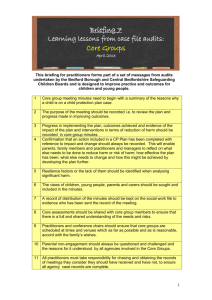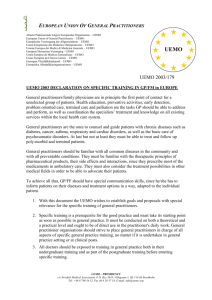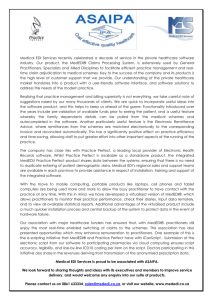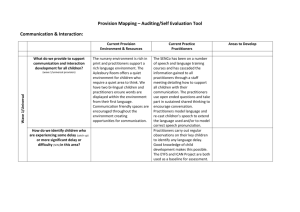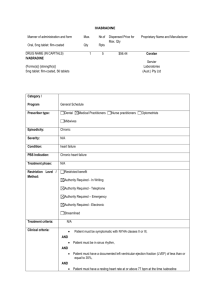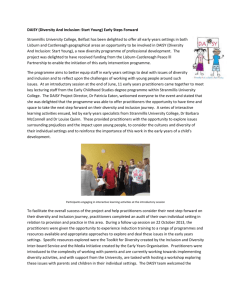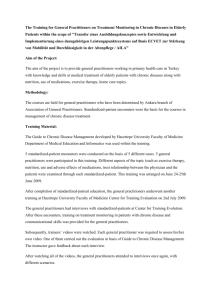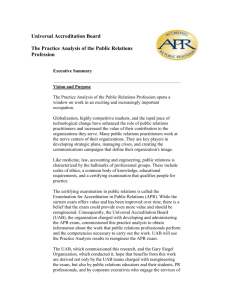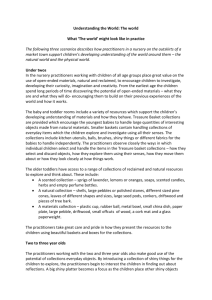Secondary Data Sources And Secondary Analysis Ppt
advertisement
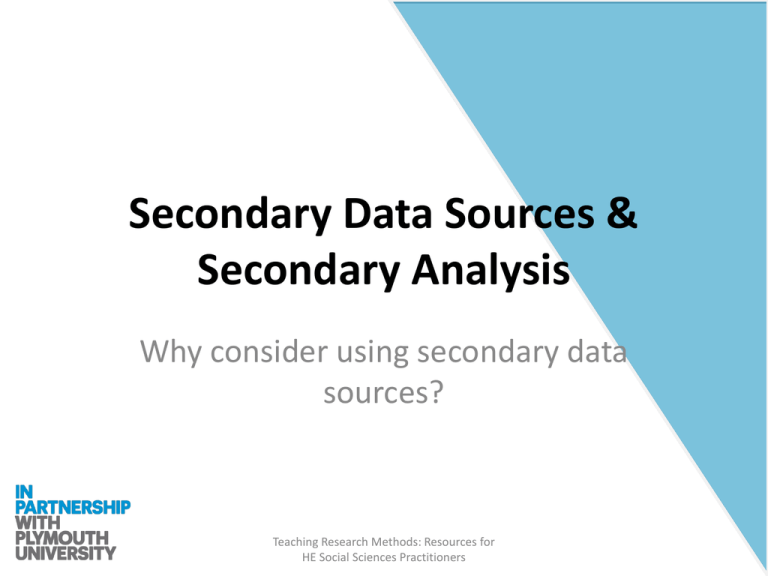
Secondary Data Sources & Secondary Analysis Why consider using secondary data sources? Teaching Research Methods: Resources for HE Social Sciences Practitioners Session Objectives • By the end of the session you will: • Understand what secondary data sources are • Using quantitative sources in teaching research and issues to consider • Understand some of the ways in which you can use secondary analysis in student projects Teaching Research Methods: Resources for HE Social Sciences Practitioners Secondary Sources: What are they? Qualitative Quantitative • Research design and • Design methods • Survey measurement • Interview questions and tools transcripts • Sampling details • Diaries • Survey data files • Visual – photographs or • Official statistics video United Kingdom European Union Global Teaching Research Methods: Resources for HE Social Sciences Practitioners From Secondary data to secondary analysis Hakim (1982:1) “… any further analysis of an existing data set which presents interpretations, conclusions or knowledge additional to, or different from those presented in the first report.” • Can form either the main focus or simply the background for research project. Teaching Research Methods: Resources for HE Social Sciences Practitioners Forms of Quantitative Data • Aggregated Data • Sample Survey Data • Longitudinal: Cohort or Panel studies Teaching Research Methods: Resources for HE Social Sciences Practitioners Forms of Qualitative Data • An emerging area: • UK Data Archive ( previously Qualidata) • • • Textual Images Audio • Mass Observation archive (Sussex) Teaching Research Methods: Resources for HE Social Sciences Practitioners Advantages • • • • • • Often a convenient data source – no primary research required. Cost effective, time efficient UK Data Archive datasets collected using robust and reliable survey techniques • Measurement tools • Sampling Large Samples (N) Deposited research has undergone an ethical clearance process Undertake comparative research Provides breadth: Use as part of a mixed methods approach. Teaching Research Methods: Resources for HE Social Sciences Practitioners Points to consider • Topics available • Coverage : geographical / population/subpopulation • Timeliness / Timeline • Longitudinal Data Analysis can be complex • Sometime compromise is required … Teaching Research Methods: Resources for HE Social Sciences Practitioners So how can you use these resources? • To provide background (broad) data that helps inform qualitative (depth) research. Aggregated Data • To help you answer a new research question – sometimes published tables but more likely an analysis of sample survey data. Teaching Research Methods: Resources for HE Social Sciences Practitioners So here is an example … • A student is interested in … • To be discussed at the evaluation event Teaching Research Methods: Resources for HE Social Sciences Practitioners

